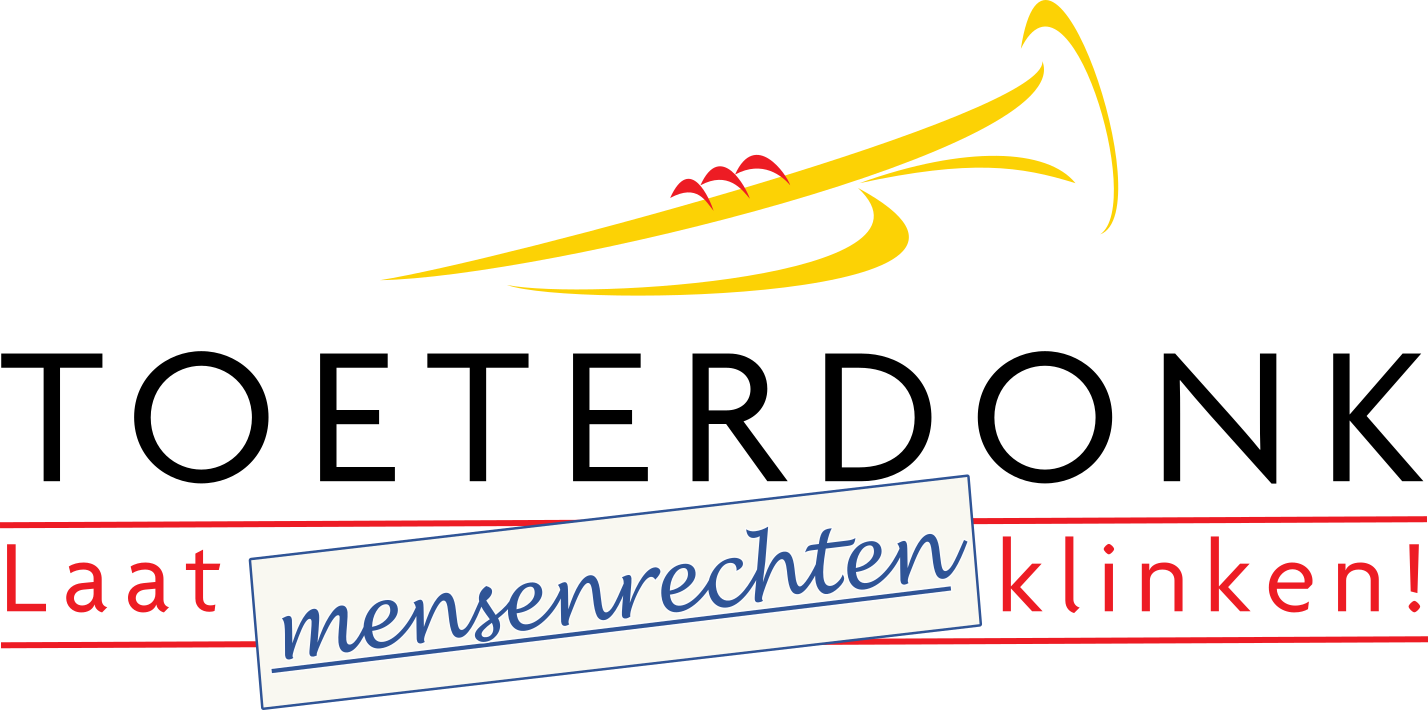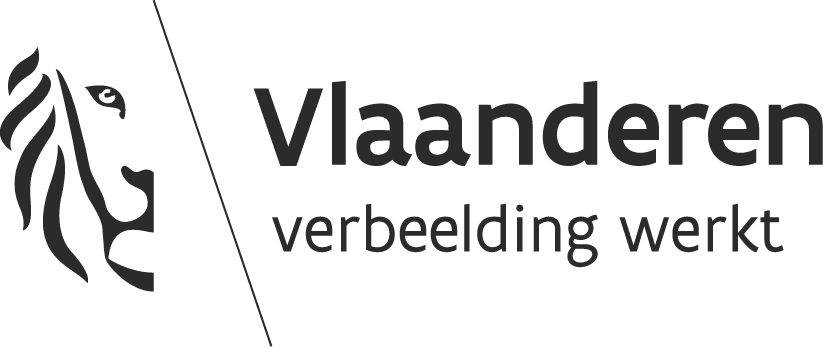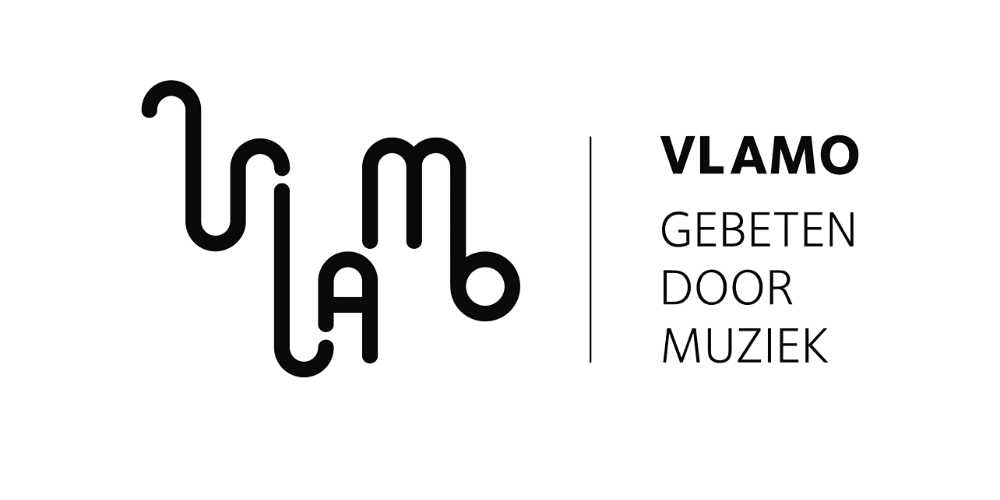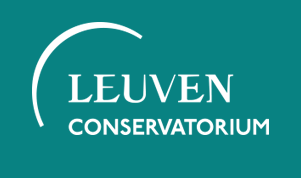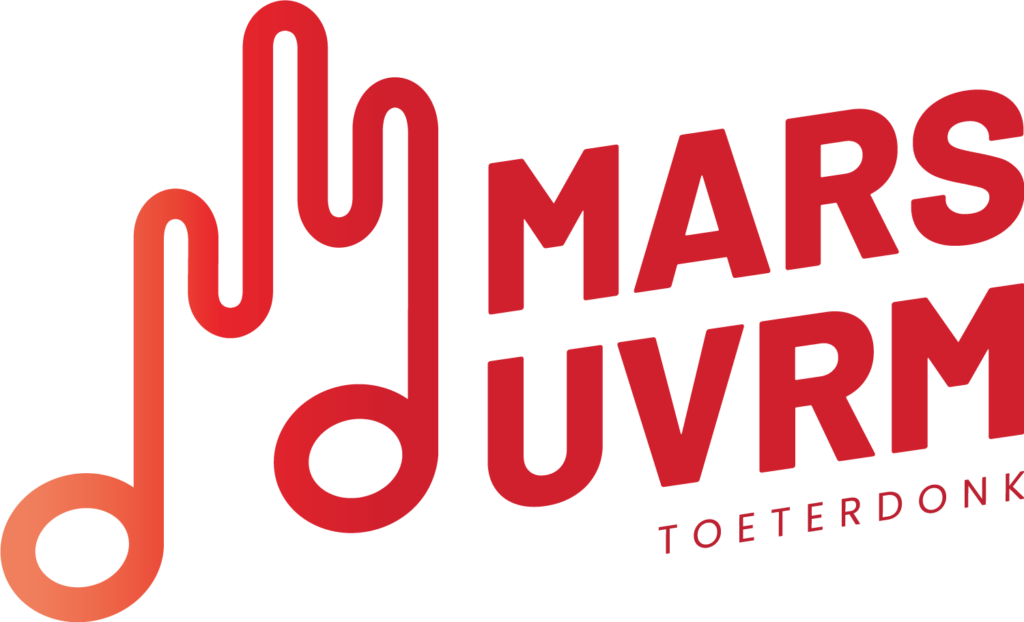

Premiere: 2 december 2023
Welcome to MARS UVRM, the latest project from Fanfare Toeterdonk from Tildonk (Haacht) in celebration of the 75th anniversary of the signing of the Universal Declaration of Human Rights.
We parade through Leuven with a diverse collective of sixty musicians, dancers, and actors to honor and protest. As an uplifting “Murga” – an irresistible mix of street fanfare, dance, and theater – we pay a unique tribute to the Universal Declaration of Human Rights and playfully kick discrimination in the ass.
Feel free to join us! Everyone welcome to contribute a part to our parade.
But you can do more than just be a spectator. After all, respecting human rights is a responsibility we all bear! That is why we offer via the button below the opportunity to share your own testimonies, atmospheric images, photos, videos, selfies, short testimonies, … about and during the march with us. “Be creative!“
*By uploading my files I also give permission to Toeterdonk vzw to use them as audio-visual material around the Mars UVRM project, and this in accordance with our privacy statement (in Dutch).
Click on the Location or Mars for more information.
[Location 1: Minnepoort] [Location 2: Fiere Margriet] [Location 3: Erasmus] [Location 4: Gerechtsgebouw] [Location 5: Museum M] [Location 6: Grote Markt]
[Mars 1: 99.4%] [Mars 2: Social Solitude, Artificial Solidarity] [Mars 3: Rebelution] [Mars 4: The Racist Rag] [Mars 5: Perpetual Immotion] [Mars 6: Closing The Circle]

Location 1 : Minnepoort
Here, we welcome you to gather some extra warmth before paying tribute for the next 2 hours to the 75 year anniversary of the Universal Declaration of Human Rights.
With or without a hot beverage in our hands, we enjoy our right to education and active participation in culture here at the Minnepoort – and adjacent Conservatory. Both are important for the development of both the individual and society. But what seems more than obvious to us can be a thorn in the side of some governments: last week, a future president thought aloud about abolishing the Ministries of Education and Culture. So today, 75 years later, still not an established right.
Fanfare Toeterdonk is surrounded by the stilt-walkers and flag-bearers of KNEPH: an artistic studio for insiders and outsiders alike and believes that vulnerability can be a quality and artistry essentially human. KNEPH offers space, encouragement, guidance and safety to vulnerable artists, both professionals and idiosyncratic prodigies who, for whatever reason, find themselves on the margins of the mainstream arts circuit.
Cheerful trumpet calls with an immediate strong undertone: we’re about to start!
This parade will be a celebration march, but not only that!
Composer/conductor Simon Van Hoecke briefly explains the concept, which will be played and shouted explicitly by Toeterdonk in a moment.
When Lady Fortuna also gives her permission, you the public proceed to the Dijleterrassen.
Toeterdonk makes a brief detour to the other side of the Dijle river.
Lady Fortuna, the blindfolded Goddess, spins the wheel of vicarious fortune and whether we are king or beggar, no one escapes the cycle of life-death-life. She guides the march and reminds us that as human beings we do not act fatalistically but make our own choices.
A procession of flag bearers follows the parade. They wobble on their stilts, seeking the balance between good and evil.
Mars 1 : 99.4%
“99.4% of all human DNA is exactly the same” is the clenched statement with which March UVRM gets underway. Everyone, anywhere in the world, is only 0.6% different in hardware from every other human being on the planet. After all, different races do not exist, there is only one human race: “Homo sapiens sapiens” – yep, twice wise! So what justifies this great inequality? Or let us put the question another way: if it is not in our hardware, where is the great difference located? Are we really that smart?
Location 2 : Fiere Margriet // Dijleterrassen
Here lies the statue of proud Margriet, the young maid who was raped, murdered and thrown into the Dijle. Legend has it that her corpse floated upstream. Even hundreds of years ago, it was a shame to assault the honor and integrity of persons. Yet in our modern society, we still witness abuse, gay bashing and many other forms of mistreatment on a daily basis.
Margaret stands for the rights of women and children, and for the right to life.
In recent months, however, even babies are not safe!
A Hidden Life
Choir (Paul Sojo) and saxophone quartet (Gert Meers) of the City Conservatory.
Set to the tones of Henry Purcell’s Dido’s Lament, it sings the story of a young man who flees his country because of homophobia and abuse. Simon Van Hoecke used as many literal passages as possible from the young man’s testimony for the lyrics of the song.
“A Hidden Life”:
Recitativo:
This boy, alone, darkness shades him.
In his mind, hell awaits him.
If not school, her food forgives him.
Their sin is nearly a welcomed guest.
Aria:
Why am I wrong? Is God my shield, I pray He’s strong.
May my wrongs create no trouble, no trouble in my family’s breast.
Where can he hide? Are silence, dance and feasts his shields?
In silence I shield
His disgracefullnes discovery weighs him down.
No love for me?
Repulsiveness…
No lover for me?
No place to go…
So please don’t reprove my fate.
Behold me, and don’t give in to your hate
No love for him…
No love for him…
No love for him…
Mars 2 : Social Solitude, Artificial Solidarity
A funeral march in which an ostinato rhythm mechanically supports various melody lines. These melody lines are seemingly separate from each other, but actually it is always the same melody, always the same song. Together they form a tangle of loneliness, with in the background the ever-grinding “artificial” solidarity mechanism.
Location 3 : Erasmus
From childhood, Erasmus received the best education in the Netherlands. As a Catholic priest, because of his vast cultural and religious background, he wanted to reform the church from within. It had to be more tolerant of dissenters, more caring for the underprivileged, and less bragging. Freedom of religion and speech were his mantra. He was not a “Protestant” like Luther or Calvin, but a reformist. Hounded by poverty and severe criticism, but also by curiosity and his passion for ancient writings, he ended up in just about every major city in the Roman Empire and England. Constantly displaced, he eventually ended up in Leuven, where he became a professor, and even councilor to Charles V. However, he died in Basel.
Testimony 1: Chris Van Asch reads a testimony from a current homeless person.
Testimony 2: Herta brings her story “From homeless to now.”
Lies Corneillie
Leuven alderman of housing, equal opportunity and global policy.
On being homeless, missing and getting opportunities, and Leuven as Human Rights City.
Mars 3 : Rebelution
The combination of “Get up, stand up” and “Ode an die Freude: alle Menschen werden Brüder” pays tribute to two tone poets from very different corners and very different times. Bob Marley and Ludwig van Beethoven, both rebellious and revolutionary, together stand up for equality and respect for everyone’s rights.
Location 4: Gerechtsgebouw // court house
For the first time, ex-government members from Guatemala are being brought before assizes for their part in the murder of Belgian Fathers Scheutists in the 1980s. An arrest warrant has been issued, and the trial will take place here in Leuven, next week. And by “here” we mean literally “here”: behind the doors of the building you are standing in front of.
Virginia Laparra Rivas plays an important role in exposing criminal, clandestine structures in the political establishment. For this she received the (symbolic) Quetzal Prize, here in Belgium. She could not receive it because she was imprisoned by a fake trial.
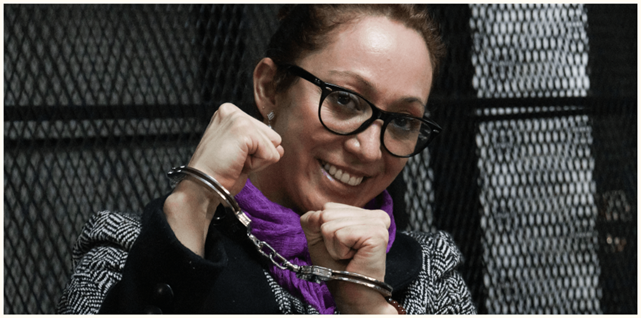
See all those drawings? They were made by people living in the Leuven Central prison.
Prof. Stephan Parmentier on Guatebelga and the presentation of the Quetzal Prize.
On the steps: dancers of Compagnie Cocon to The rage of Babylon (Simon Van Hoecke), music based on a Jewish song.
Mars 4 : The Racist Rag
Does a world view exist alongside a world sound?
Flemish folklore and a colorful Arabic melody challenge each other: will they find a place next to each other, discover each other’s beauty or even succeed together? Different scenarios, each with their own musical effect… coincidences color our world.
Location 5 : Museum M
Four empty chairs, one woman, waiting for her family. Where are husband and children?
Once again lady Fortuna appears and sings the Song of Blood, as written 900 years ago by the German mystic Hildegard von Bingen.
Blood, which flows so richly from the veins of my brothers; and my own blood, my children, not to be found. Alive? Dead, flowing or shed?
Dance solo: Dauwke Van Kerckhove
“Musical Chairs” (Catherine Betts and Joshua Webster) by percussionists from the City Conservatory’s percussion class (Tom Ouderits and Mathias Ghesquière)
This is how the woman waits . In vain, she knows. The chairs remain empty.
Prof. Ingrid De Poorter on human rights in society.
Mars 5 : Perpetual Immotion
Like perpetual motion, our society goes on and on, but what about those who cannot keep up? Mobility has many meanings; perhaps the most challenging is to break vicious circles in people or families in problem situations. What keeps them from falling into perpetual immobility? Is our society sensitive to this?
Location 6: Grote Markt
City carillonneur Eddy Mariën is already announcing us with his variations on “Ode an die Freude.”
The painting Kneph is showing is still upside down right now. Soon it won’t be.
“The bankruptcy of democracy.”
As soon as we are well and truly arrived, Eddy gives us the prelude to:
In Close Harmony (Simon Van Hoecke)
Getting the audience warmed up and carried away is a job for Ronny Mosuse. Together with the band, we sing the National Anthem of Europe, or the Peace Song in Flanders, or, as Beethoven and Schiller intended, their ode to joy. We certainly do not forget the misery, the enormous distance yet to be covered, yet we celebrate that small step: the Universal Declaration of Human Rights.
Close harmony is a musical style in which all the chord notes are close to each other, yet do not fray … on the contrary: it forms a unique and particularly warm consonance. Imagine if our society were also in close harmony?
Such a thing was far from imagined when Ludwig van Beethoven wrote his 9th symphony, but his message fits this thought wonderfully. The melody of peace, freedom and solidarity; our European Hymn with a warm and modern touch in … “close harmony”!
Mars 6: Closing the Circle
Soon it will be dark and cold. We retreat to the Minnepoort to warm up. Not in silence: the joy is still there, and those who listen carefully will once again hear all the musical themes from Mars UVRM.
Many thanks to
- City of Leuven: Lies, Dagmar, Elfje, Eddy, 30CC, Technische Dienst, Dienst Inname Publiek Domein, Politie.
- Conservatory of Leuven: Kim, Paul, Gert, Tom, Matthias, the saxophone ensemble, the percussion ensemble and the choir.
- Hot Drinks: Oxfam and Refug Interim
- Dance: Compagnie Cocon and Dauwke
- Speakers: Lies, Stephan and Ingrid
- Scarves: Atelier BLEND
- Ronny
- Kneph, stiltwalkers and painters
- Vrouwe Fortuna
- Everyone from Toeterdonk: musicians, carters, flag bearers, stewards, IT people … Catherine and Joshua
- Monireh from Iran
- U, the audience
- Simon, Pier and Jennifer
- VLAMO
- de Flemish Government
Toeterdonk
Toeterdonk, founded in 2011, may still be very young, but it already has a lot of merits on the counter. For example, in 2013 we became VLAMO fanfare band champion in second division, in 2017 and 2021 in first division, and in 2022 in division excellence with a whopping 94.2%. In 2016, we became laureate of the VLAMO Award with our performance “Engelenburcht” and with our family concert “Help! The cake is on fire!” we earned a nomination for the 2019 project year. In 2023, we present you today performance around the 75th anniversary of Universal Declaration of Human Rights (URVM).
And corona didn’t knock us down either. From home we managed to make music together, with some nice videos and the jury prize of the HaFaBra song festival as a result!
Every Friday evening we rehearse under the direction of Simon Van Hoecke from 8 p.m. to 10.30 p.m. in hall Familia in Tildonk.
Simon Van Hoecke
Onze dirigent Simon Van Hoecke leert op zesjarige leeftijd zijn eerste noten blazen op de cornet. Gebeten door muziek behaalde hij het meesterdiploma trompet, kamermuziek, directie en pedagogie aan het Conservatorium van Antwerpen en vervolmaakte zich vervolgens in de trompetklas van Prof. Klaus Schuhwerk aan de “Hochschule für Musik und Darstellende Kunst” in Frankfurt am Main.
Zijn muzikale enthousiasme geeft Simon niet alleen door als dirigent van fanfare Toeterdonk, maar ook als gastdirigent en op diverse masterclasses van Frankrijk tot in het Conservatorium van St. Petersburg. Als dirigent weet hij perfect de ziel van ieder muziekwerk over te brengen en zo het beste uit iedere muzikant naar boven te halen.
Zijn beheersing van zowel trompet als cornet, bugel en piccolotrompet onderstreept zijn muzikale veelzijdigheid en flexibiliteit. Hij is een creatief en veelzijdig kunstenaar die graag en regelmatig samenwerkt met artiesten uit andere disciplines. Zijn creativiteit en passie voor het “koperblazen” maken van hem een enthousiast docent, dirigent en solist, en uit zich ook in talrijke arrangementen en composities.
Simon is 1ste solist trompet aan het Orchestre Philharmonique du Luxembourg, lid van I Solisti als muzikant en als mentor van jonge beloftevolle muzikanten. Met het Eburon Quintet behaalde hij de eerste prijs op het prestigieuze “Concours International de Musique de Chambre” in Lyon. Sinds september 2016 is Simon aangesteld als professor trompet aan het Koninklijk Conservatorium van Antwerpen.
Our conductor Simon Van Hoecke learned to blow his first notes on the cornet at the age of six. Bitten by music, he obtained the master’s degree in trumpet, chamber music, conducting and pedagogy at the Conservatory of Antwerp and then perfected himself in the trumpet class of Prof. Klaus Schuhwerk at the “Hochschule für Musik und Darstellende Kunst” in Frankfurt am Main.
Simon passes on his musical enthusiasm not only as conductor of fanfare Toeterdonk, but also as guest conductor and at various master classes from France to the St. Petersburg Conservatory. As a conductor, he knows perfectly how to convey the soul of each musical work, bringing out the best in each musician.
His mastery of trumpet as well as cornet, flugelhorn and piccolo trumpet underscores his musical versatility and flexibility. He is a creative and versatile artist who enjoys and regularly collaborates with artists from other disciplines. His creativity and passion for “brass blowing” make him an enthusiastic teacher, conductor and soloist, and is also expressed in numerous arrangements and compositions.
Simon is 1st soloist trumpet at the Orchestre Philharmonique du Luxembourg, member of I Solisti as a musician and mentor of young promising musicians. With the Eburon Quintet, he won first prize at the prestigious “Concours International de Musique de Chambre” in Lyon. Since September 2016, Simon has been appointed professor of trumpet at the Royal Conservatory of Antwerp.
Pier De Kock
Pier De Kock zette zijn eerste professionele stappen in het theater bij ‘Vuile Mong en zijn Vieze Gasten’, begin de jaren 1980. In 1986 startte hij zijn eigen gezelschap: ‘Zwemmen in Brak Water vzw‘. Intussen gaat hij ook freelancen en rondtoeren in Vlaanderen en Nederland met verschillende monologen: Pancho y Pablito, BoiasFrias, Een Dans Teveel, SaïbSaïb, Nooit zonder Jas!. De laatste en meest bekende in Mechelen en omstreken is wellicht ‘Pendejos/ Idioten!’, een monoloog over duurzame ontwikkeling.
Zijn carrière als beroepsregisseur begon in 1999 met hoogtepunten als:
- De Heks van Assenede – openluchtspektakel in Assenede
- Breendonk 21 – Een theaterwandeling in het fort van Breendonk;
- Het gezin van Paemel
- De Pruimelaarstraat
- De Rode Knop
Sinds september 2000 ontwikkelde hij in Gent een merkwaardig sociaal-artistiek parcours.
Wonen en werken doet hij sinds 2010 in Mechelen. Hij creëerde intussen aldaar o.m.: ‘Hotel Amigo’; ‘ Déjà Vue!’; ‘Aan tafel Katelijnestraat!’ en regisseerde al heel wat bij Theater De Peoene.
In oktober 2014 startte hij ‘Op!Sinjoor!’ : een sociaal-artistiek theateratelier waar men probeert zo professioneel mogelijk theater te maken met personen al dan niet in armoede.
Hij werd als curator aangesteld voor het sociaal-artistieke luik van “Op.Recht.Mechelen“. In het kader van dit festival werd de werking van ‘ Op!Sinjoor!’ veranderd in ‘Het Hof Van Savooien’.
Cabaretesk wrijft hij, samen met jongeren, armen, daklozen, thuislozen, gedetineerden hun problemen onder onze neus, liefst op merkwaardige, passende locaties.
Corona kreeg hem niet stil: hij bleef actief met muzikale projectjes met Straathoekwerk Mechelen. Een digitale storytelling met personen in armoede met empowerment als motor en met een mise-en -scène als grote verrassing; tegelijk buurtontwikkelend.
Pier De Kock took his first professional steps in theater with ‘Vuile Mong en zijn Vieze Gasten‘ in the early 1980s. In 1986 he started his own company: ‘Zwemmen in Brak Water vzw‘. Meanwhile, he also freelances and tours in Flanders and the Netherlands with various monologues: Pancho y Pablito, BoiasFrias, Een Dans Teveel, SaïbSaïb, Nooit zonder Jas!. The latest and probably the most famous in Mechelen and the surrounding area is “Pendejos/ Idiots!”, a monologue about sustainable development.
His career as a professional director began in 1999 with such highlights as:
- The Witch of Assenede – open-air spectacle in Assenede
- Breendonk 21 – A theatrical walk in the fortress of Breendonk;
- The Family of Paemel
- The Plum Square
- The Red Button
Since September 2000, he developed a remarkable socio-artistic trajectory in Ghent.
He has been living and working in Mechelen since 2010. In the meantime, he created there, among others: “Hotel Amigo”; “Déjà Vue!”; “Aan tafel Katelijnestraat!” and directed a lot at Theater De Peoene.
In October 2014, he launched “Op!Sinjoor!” : a social-artistic theater studio where one tries to make theater as professional as possible with persons whether in poverty or not.
He was appointed curator for the social-artistic part of “Op.Recht.Mechelen“. As part of this festival, the operation of ” Op!Sinjoor!” was changed to “Het Hof Van Savooien”.
Cabaretically, together with young people, the poor, the homeless, the inmates, he rubs their problems under our noses, preferably at peculiar, appropriate locations.
Corona didn’t get him to shut up: he remained active with little musical projects with Straathoekwerk Mechelen. A digital storytelling with persons in poverty with empowerment as its driving force and with a mise-en-scène as a big surprise; at the same time neighborhood developing.
Jenifer Regidor
Jennifer Regidor (b. 1973) is a choreographer/dancer/teacher. Her passion for dance is expressed in creating dance productions and projects, in inspiring young and old through the physical experience of the body as an instrument.
Jennifer took her studies in dance at the Higher Institute of Dance (specialization in contemporary dance) and complemented it with training at P.A.R.T.S. in Brussels.
She participated in domestic and foreign dance projects in collaboration with different choreographers and groups such as P.A.R.T.S. (Anne Teresa De Keersmaeker), Compagnie Aimé de Lignière, Cie. Arcoballo, Roberto Olivan, Anton Lachky, Min Hee Bervoets, etc.
Since 1999 she leads her own dance company Lune. Several productions were already performed in cultural centers in Belgium, the Netherlands and France, Spain, Mexico…. As a choreographer she already won several awards and in 2006 and 2009 she became with Lune Ambassador of Contemporary Dance in Flanders.
Throughout her artistic trajectory, she likes to mix contemporary dance more and more with other art forms including live music, singing, video art, painting…. In order to professionalize Lune, she founded a second company, Lune&Co, in 2010. Since September 2013, this company has been completely separated as Compagnie Cocon. It consists of a database of free-lance dancers, who are tapped for each project. She has also been associated since 2002 with the collective Dance Project, which gives young people the opportunity to gain more stage experience in an annual festival in various cultural centers in Flanders. In January 2017, she created her first solo work “Manusutra” in collaboration with saxophonist Benny Laureyn and painter Klaas Vanderperren, which premiered at STUK in Leuven. Since 2017, she has also been dancing with HNDRD, the contemporary company led by Min Hee Bervoets, with whom she toured with ‘One Limited Space’ throughout Flanders and the Netherlands.
Her own dance material is still evolving and is mainly characterized by musicality, flow and dynamics in which she does not shy away from partner work and groundwork. She has been the artistic coordinator of the dance humanities at the KSO Lemmens Institute in Leuven since 2022 where she teaches contemporary dance and dance lab. She also still teaches at Danscentrum Aike Raes and Dansstudio Hilde Goyens in Leuven. Besides giving workshops, coaching… she also regularly sits on the jury of dance competitions for contemporary and modern dance.
In May 2023, “EVER/AFTER” premiered as the first part in a triptych. Jennifer created a solo as a dancer/choreographer in collaboration with cellist Renke Van Impe, composer/guitarist Gasper Piano and dancer Loeka Willems. This creation, on the occasion of her 50th birthday, exposes the infinite cycle and interaction between a teacher and student. Where there is no hierarchy, where movements make poetry and stories and bodies are tools to enrich each other in each other’s language.
KNEPH
KNEPH works as a COLLECTIVE. Every Friday evening, artists meet in the Hangar, where they receive guidance to shape their personal trajectory.
Each active studio attendee grows at their own pace toward autonomous anchoring and engagement in studio work.
Q.U.E.S.T. is the personal artistic journey of an artist committed to an artistic process. Both substantively, technically, formally …. it explores and experiments which developmental dynamics keep the engine running.
KNEPH operates as a medieval studio.
The developmental process of an artist takes place in co-creation.
The studio is multidisciplinary. Textile art, sculpture, painting, film, performance, theater, literature, installation art, …. The discipline is chosen according to the need of the personal artistic process or the demand to acquire a technique. It takes into account the expressiveness of the content, experimentation and groundbreaking research. The aim is for the artists to work as autonomously as possible.
Mars UVRM
Op 10 december 1948 nam de Algemene Vergadering van de Verenigde Naties de Universele Verklaring van de Rechten van de Mens (UVRM) aan, een mijlpaal in de geschiedenis!
75 jaar later zijn deze rechten nog lang niet universeel verworven. Da’s straf! Want naast grove schendingen van de mensenrechten in verre oorlogsgebieden, stellen we ook dichter bij huis nog elke dag discriminaties vast. Vaak op basis van huidskleur, geslacht of taal, maar evengoed geleid door politieke of spirituele overtuigingen, tot zelfs de positie op de maatschappelijke ladder of de dikte van de portefeuille.
Daarom trekken wij van Toeterdonk met een bont collectief van zestig muzikanten, dansers en acteurs doorheen de straten om te protest-eren. Als een opzwepende “Murga” – een onweerstaanbare mix van straatfanfare, dans en theater – brengen we op unieke wijze hulde aan de Verklaring van de Universele Rechten van de Mens en geven we discriminaties een speelse schop onder de kont.
Geen gewone fanfare dus, niet strak in de pas en al helemaal zonder het belerende vingertje. Wel jubelend en met aanstekelijke losbandigheid! Zo toveren we toeschouwers om in deelnemers. Want enkel samen kunnen we bouwen aan een diverse en warme samenleving, als een puzzel waarin élk stukje telt. Ook ‘grote’ Rechten beginnen immers klein en dichtbij.
On December 10, 1948, the United Nations General Assembly adopted the Universal Declaration of Human Rights (UDHR), a milestone in history!
75 years later, these rights are far from universally acquired. That’s intense! Because in addition to gross violations of human rights in distant war zones, we also observe discrimination closer to home every day. Often on the basis of skin color, gender or language, but just as often guided by political or spiritual beliefs, even to the position on the social ladder or the thickness of the wallet.
That’s why we from Toeterdonk march through the streets with a motley collective of sixty musicians, dancers and actors to protest. As a rousing “Murga” – an irresistible mix of street fanfare, dance and theater – we pay tribute to the Declaration of Universal Human Rights in a unique way and give discrimination a playful kick in the pants.
No ordinary fanfare, then, and certainly no finger wagging, but jubilant and with infectious debauchery! This is how we turn spectators into participants. Because only together can we build a diverse and warm society, like a puzzle in which every piece counts. After all, even ‘great’ Rights start small and close by.
